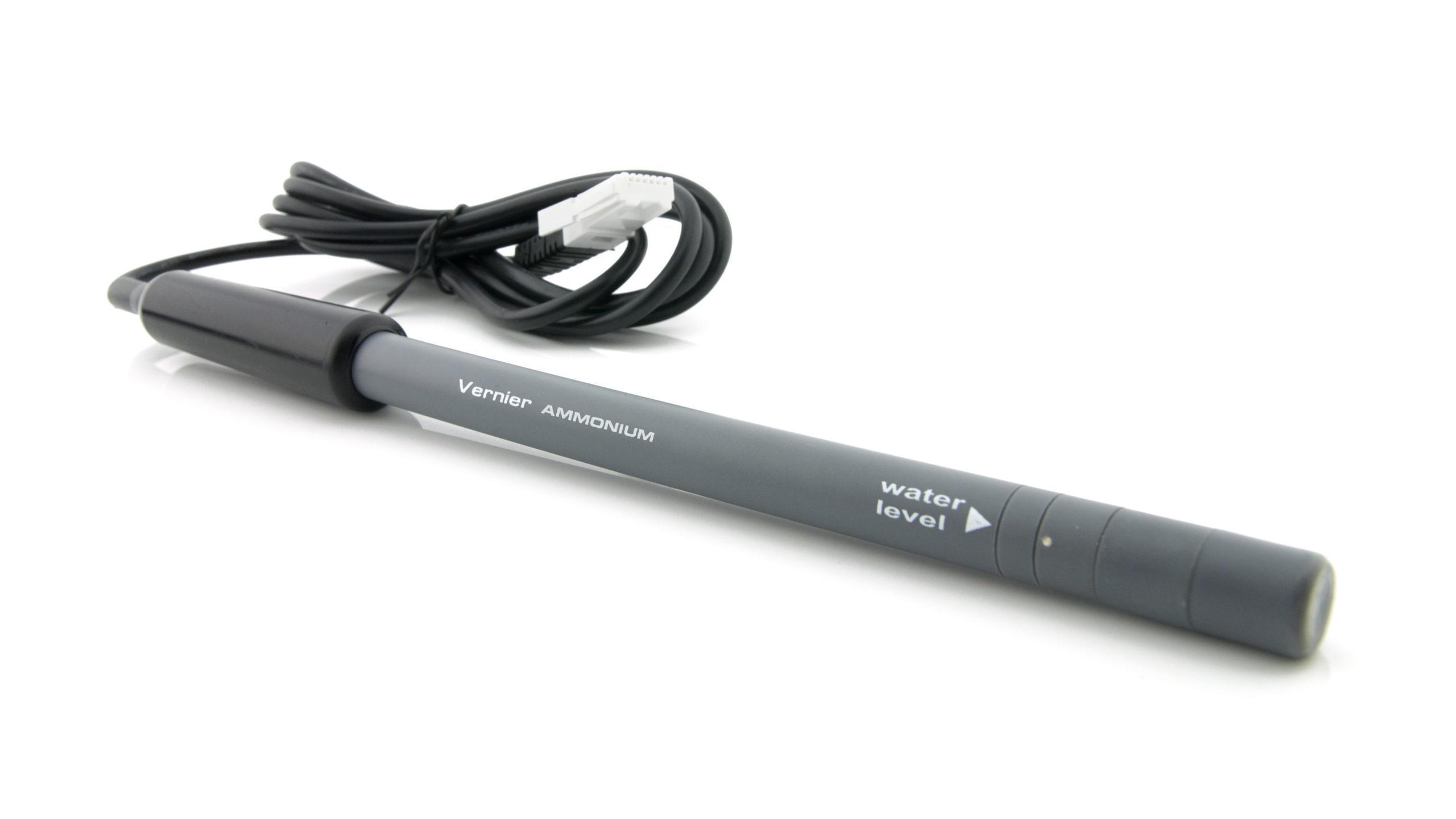Introduction
The ammonium ion, NH4+, is an important member of the group of nitrogen-containing compounds that act as nutrients for aquatic plants and algae. In surface water, most of the ammonia, NH3, is found in the form of the ammonium ion, NH4+. This fact allows us to approximate the concentration of all of the nitrogen in the form of ammonia and ammonium combined, commonly called ammonia nitrogen, by measuring only the concentration of the ammonium ions.
All plants and animals require nitrogen as a nutrient to synthesize amino acids and proteins. Most nitrogen on earth is found in the atmosphere in the form of N2, but plants and animals cannot utilize it in this form. The nitrogen must first be converted into a useable form, such as nitrate, NO3–. These conversions among the various forms of nitrogen form a complex cycle called the nitrogen cycle, illustrated above.
In the nitrogen cycle, bacteria convert atmospheric nitrogen into ammonium in a process called nitrogen fixation. This process often occurs in the roots of leguminous plants such as alfalfa, beans, and peas.
Bacteria can also convert the nitrogen in decaying plant and animal matter and waste products in soil or water to ammonium in a process called ammonification. Other sources of organic matter for ammonification include industrial waste, agricultural runoff, and sewage treatment effluent.
Some trees and grasses are able to absorb ammonium ions directly, but most require their conversion to nitrate. This process, called nitrification, is usually accomplished by bacteria in the soil or water. In the first step of nitrification, ammonium ions are oxidized into nitrite. The nitrite is then converted into nitrate, which can subsequently be utilized by plants and algae.
Animals require nitrogen as well. They obtain the nitrogen they need by eating plants or by eating other animals, which in turn have eaten plants.
If ammonium nitrogen levels in surface waters are too high, they can be toxic to some aquatic organisms. If the levels are only moderately high, plant and algal growth will usually increase due to the abundance of nitrogen available as a nutrient. This will have a ripple effect on other attributes of water quality, such as increasing biochemical oxygen demand and lowering dissolved oxygen levels. Dissolved oxygen levels can also be lowered when ammonium nitrogen is high due to the increased amount of nitrification occurring.
If enough nutrients are present, eutrophication may occur. Eutrophication occurs when there is such an abundance of nutrients available that there is a significant increase in plant and algal growth. As these organisms die, they will accumulate on the bottom and decompose, releasing more nutrients and compounding the problem. In some cases, this process of eutrophication can become so advanced that the body of water may become a marsh, and eventually fill in completely.
If too little ammonium nitrogen is present, it may be the limiting factor in the amount of plant and algal growth. Ammonium nitrogen can quickly be converted into nitrites or nitrates; therefore, a low level of ammonium-nitrogen does not necessarily indicate a low level of nitrogen in general.
Objectives
- Measure the concentration of ammonium nitrogen in a stream or lake using an Ammonium Ion-Selective Electrode (ISE).
Sensors and Equipment
This experiment features the following sensors and equipment. Additional equipment may be required.
Ready to Experiment?
Ask an Expert
Get answers to your questions about how to teach this experiment with our support team.
- Call toll-free: 888-837-6437
- Chat with Us
- Email support@vernier.com
Purchase the Lab Book
This experiment is #10 of Water Quality with Vernier. The experiment in the book includes student instructions as well as instructor information for set up, helpful hints, and sample graphs and data.


